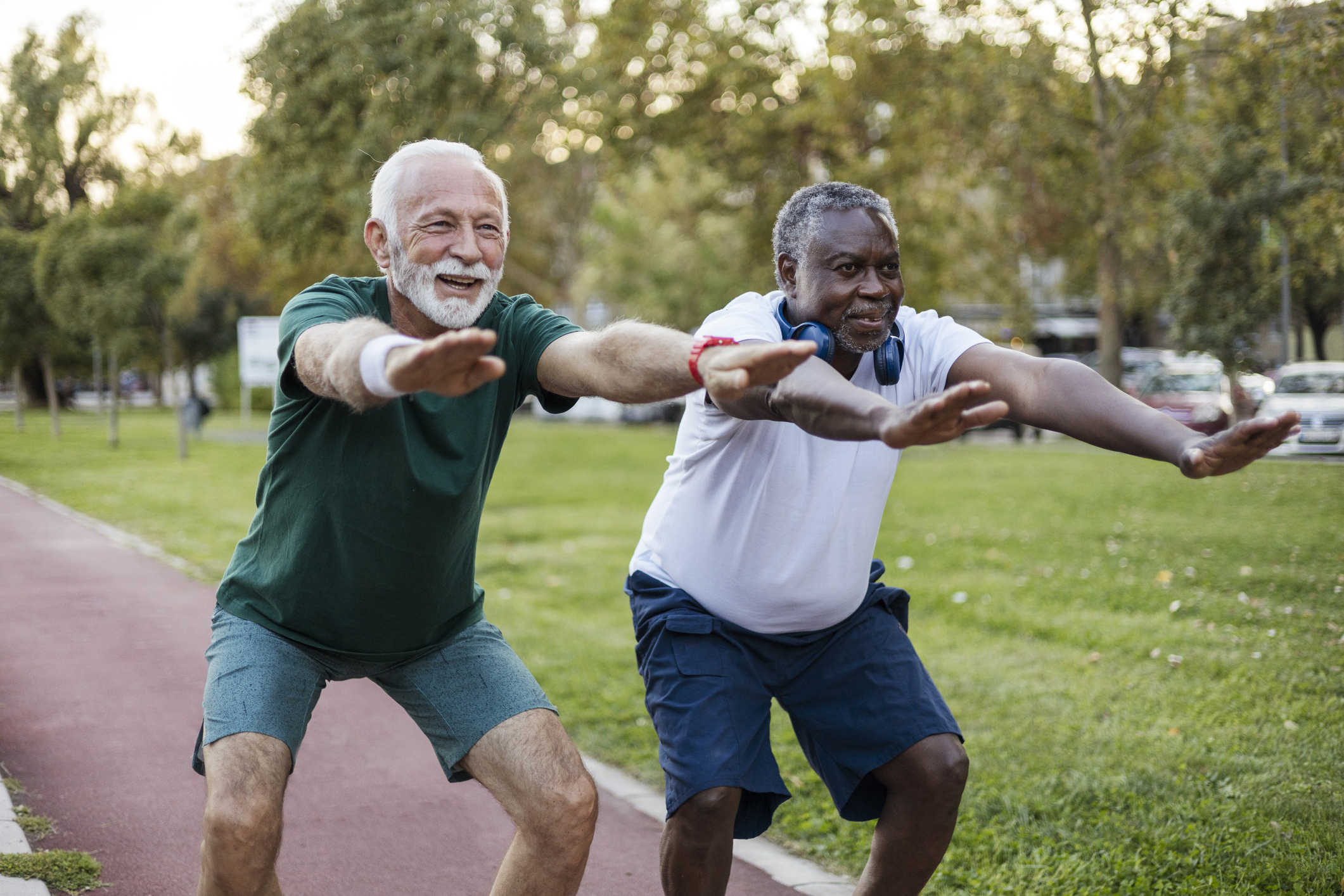Get Easy Health Digest™ in your inbox and don’t miss a thing when you subscribe today. Plus, get the free bonus report, Mother Nature’s Tips, Tricks and Remedies for Cholesterol, Blood Pressure & Blood Sugar as my way of saying welcome to the community!
Dynamic squats for lower body strength

Lower body (leg) strength is important for optimal posture, balance and range of motion. Oftentimes people complain of low back pain, and this can be related to imbalances or weakness in the strength and tone of the leg muscles; the quadriceps, hamstrings, and calves. Squatting is a great way to develop leg strength through the full range of motion. And using a Swiss ball while squatting offers opportunity to do them safely and dynamically.
In today’s video article, my friend and trainer Dennis Angelina will show you the safe and proper way to utilize a Swiss ball to maximize your squats.
Why use a Swiss ball for assistance?
The use of a Swiss (stability) ball to assist with squats is a great way to begin doing unsupported or even weight-bearing squats, which can be pretty daunting in the beginning. It is a simple modification of the squat that allows you to perfect posture and technique while building lower body strength and endurance to later (if you wish) do regular squats.
So, if you have tried squats and have a hard time getting down or achieving full range of motion or number of repetitions, than using the Swiss ball is a great tool to get you going.
Proper starting position
Put the Swiss ball right up against the wall. The important thing is to have proper posture with this, and the start of that is to begin with the ball placed between the wall and the small of your back. This is the region of the lower back right where your butt meets your back.
From here adjust your feet so they are at least shoulders’ width apart. Some people like the stance to be a bit wider, for better balance and support. It up to you, so see how a few of these squats feel and adjust foot spacing accordingly.
Your feet must also come out in front of you. They cannot begin right under your knees, like you would do for an unsupported squat. Because we are leaning again the ball, we will use it to our advantage and begin with our feet in front of out body, toes pointed slightly outward.
Proper squatting mechanics
Now that you are in a proper starting position, you want to begin your squats. You want to make sure that you sit back and not forward. If you squat down in a forward direction, your hips will drive forward and place a lot of weight onto your knees; which is bad.
From standing position, bend your knees and sit back (rolling down along the front of the ball) toward the wall. Notice that my shins are vertical, as that is important. You have to assess yourself because if they are diagonal at the bottom of the squat, it means your knees are moving forward and too much weight is being placed on them. If this is the case, simply stand up and reposition your feet a bit more in front of yourself.
Proper squats
Now that you have a proper starting position and vertical shins at the bottom of the squat, you can begin doing Swiss ball wall squats. Simply bend your knees to lower your body, allowing your but to sit back toward the wall.
You want to try and get low enough that your hips are below your knees before pressing your feet into the ground to push yourself back up the ball.
If you are extra tight in the hip flexors or have some arthritis or join pain, and thus cannot drop this low, that is ok. Just go down as far as you can comfortably go, then rise back up again.
Try two or three sets of 10 or 20 reps and build from there. Over time the squats should become easier, your fatigue less, and your reps higher. Not only that, but you will begin to notice that once-nagging low back and hip pain to diminish or disappear!












